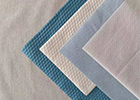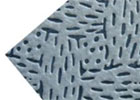Nonwoven Fabric for Home Cleaning Factories: Quality Solutions
Introduction
Nonwoven fabric is commonly used in home cleaning factories due to its numerous advantages. It is a type of fabric that is manufactured by bonding or interlocking fibers together using various methods, such as heat, chemicals, or mechanical processes. This process helps to create a strong and durable fabric that is suitable for a wide range of cleaning applications. In this blog post, we will provide an overview of nonwoven fabric for home cleaning factories and discuss its advantages.
Overview of Nonwoven Fabric for Home Cleaning Factories
Nonwoven fabric is widely used in home cleaning factories for a variety of reasons. Here are some key points to consider:
• Versatility: Nonwoven fabric can be used for various cleaning purposes, such as wiping, mopping, dusting, and scrubbing. It is available in different thicknesses, textures, and absorbencies to suit different cleaning needs.
• Cost-effective: Nonwoven fabric is an affordable option for home cleaning factories. It is relatively inexpensive to produce and can be easily mass-produced, making it a cost-effective choice for large-scale cleaning operations.
• Ease of use: Nonwoven fabric is user-friendly and easy to handle. It can be easily cut into different shapes and sizes, making it suitable for different cleaning tools and equipment.
• Hygiene: Nonwoven fabric is a hygienic option for home cleaning. It is often treated with antibacterial agents to prevent the growth of bacteria and other microorganisms, ensuring a clean and safe environment.
• Durability: Nonwoven fabric is known for its strength and durability. It can withstand repeated use and can be easily cleaned and sanitized, making it a long-lasting option for home cleaning factories.
• Environmental-friendly: Nonwoven fabric can be made from recycled materials, reducing waste and environmental impact. It is also biodegradable, making it a sustainable choice for home cleaning operations.
Advantages of using Nonwoven Fabric in Home Cleaning
Using nonwoven fabric in home cleaning factories offers several advantages. Here are some key benefits:
• Improved cleaning efficiency: Nonwoven fabric has excellent absorbent properties, allowing it to quickly and effectively pick up dirt, dust, and other particles. This helps to improve cleaning efficiency and achieve better results.
• Scratch-free cleaning: Nonwoven fabric is gentle on surfaces and does not scratch or damage delicate surfaces, such as glass or stainless steel. This makes it a suitable choice for cleaning sensitive areas in homes.
• Lint-free: Nonwoven fabric is lint-free, which means it does not leave behind any fibers or particles after cleaning. This helps to achieve a clean and pristine finish.
• Time-saving: Nonwoven fabric is designed to capture and hold onto dirt and dust particles, reducing the need for multiple passes or repetitions during cleaning. This can save time and effort for home cleaning factory workers.
In conclusion, nonwoven fabric is a versatile and cost-effective option for home cleaning factories. It offers several advantages, including improved cleaning efficiency, scratch-free cleaning, lint-free performance, and time-saving benefits. By incorporating nonwoven fabric into their cleaning processes, home cleaning factories can enhance productivity, maintain hygiene standards, and achieve better cleaning results.
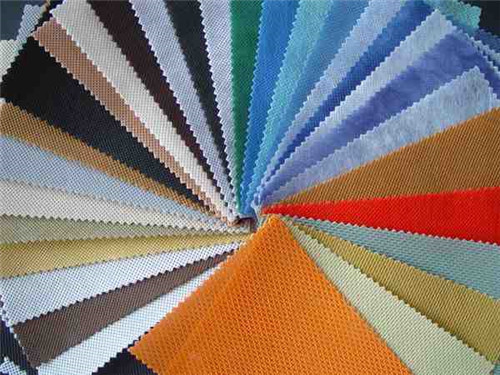
Types of Nonwoven Fabric
Spunbond Nonwoven Fabric
Spunbond nonwoven fabric is one of the most common types used in home cleaning factories. It is made by spinning and bonding continuous filaments of polypropylene or polyester fibers together. This type of fabric is known for its strength, durability, and resistance to tearing. Spunbond nonwoven fabric is lightweight and breathable, making it suitable for applications such as wiping and dusting. It is also cost-effective and can be easily mass-produced, making it an ideal choice for large-scale cleaning operations.
Meltblown Nonwoven Fabric
Meltblown nonwoven fabric is another popular choice for home cleaning factories. It is produced by melting and extruding polymer granules, which are then blown into ultrafine fibers. These fibers are randomly laid and bonded together to create a dense and absorbent fabric. Meltblown nonwoven fabric has excellent filtration properties, making it effective for capturing small particles and liquids. It is commonly used in applications such as mopping and scrubbing. This type of fabric is soft, flexible, and easy to handle, making it a convenient option for various cleaning tasks.
In summary, nonwoven fabric is a versatile material that offers many benefits for home cleaning factories. It is available in different types, such as spunbond and meltblown nonwoven fabric, each with its own unique properties. Spunbond nonwoven fabric is known for its strength and durability, while meltblown nonwoven fabric has excellent filtration properties. By incorporating these types of fabric into their cleaning processes, home cleaning factories can enhance efficiency, achieve better results, and maintain cleanliness standards.
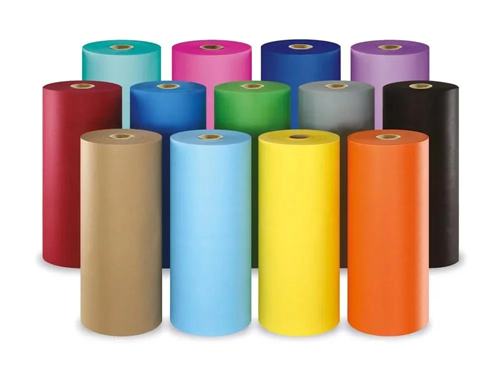
Benefits of Nonwoven Fabric in Home Cleaning
High Absorbency and Liquid Retention
Nonwoven fabric, specifically meltblown nonwoven fabric, offers high absorbency and liquid retention properties. This makes it highly effective for tasks that involve cleaning up spills and mopping floors. The fibers in meltblown nonwoven fabric are randomly laid and bonded together, creating a dense and absorbent material that can quickly soak up liquids. This not only helps in maintaining cleanliness but also saves time and effort in the cleaning process.
Enhanced Cleaning Efficiency
The use of nonwoven fabric in home cleaning factories enhances cleaning efficiency. Spunbond nonwoven fabric, known for its strength and durability, is ideal for wiping and dusting surfaces. Its lightweight and breathable nature make it easy to maneuver and reach less accessible areas. On the other hand, meltblown nonwoven fabric with its excellent filtration properties is effective in capturing small particles and liquids, making it suitable for tasks such as scrubbing and mopping. With these different types of nonwoven fabric available, home cleaning factories can improve their cleaning processes and achieve better results.
In summary, nonwoven fabric, particularly spunbond and meltblown nonwoven fabric, offers several benefits for home cleaning factories. Its high absorbency and liquid retention properties make it efficient for cleaning up spills, while its strength and durability enhance wiping and dusting tasks. Additionally, the excellent filtration properties of meltblown nonwoven fabric contribute to improved cleaning efficiency. By incorporating nonwoven fabric into their cleaning processes, home cleaning factories can enhance cleanliness standards and achieve more efficient cleaning operations.
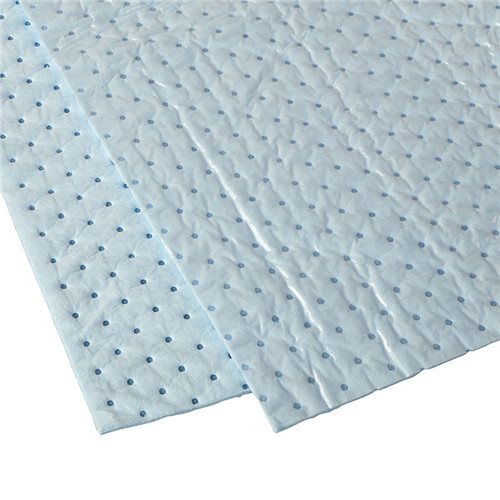
Applications of Nonwoven Fabric in Home Cleaning
Wipes and Towels
Nonwoven fabric is widely used in the production of wipes and towels for home cleaning purposes. These wipes and towels made from nonwoven fabric offer several advantages over traditional cloth-based products. Some key applications include:
• High absorbency: Nonwoven fabric wipes and towels are designed to quickly absorb liquids and spills, thereby minimizing the spread of dirt and bacteria. This helps in maintaining a clean and hygienic environment in homes.
• Soft and gentle: Nonwoven fabric wipes and towels are often made from materials that are soft and gentle on surfaces, making them suitable for use on delicate items like glassware and electronics.
• Disposable: Nonwoven fabric wipes and towels can be conveniently disposed of after use, reducing the risk of cross-contamination and promoting hygiene in home cleaning practices.
• Lint-free: Nonwoven fabric wipes and towels are typically lint-free, ensuring that no residue or fibers are left behind on cleaned surfaces.
Mops and Brooms
Nonwoven fabric is also utilized in the manufacturing of mops and brooms for home cleaning purposes. The use of nonwoven fabric in these tools offers several advantages:
• High absorbency: Nonwoven fabric mops and brooms are designed to effectively absorb moisture and spills, allowing for efficient cleaning of floors and surfaces.
• Durability: Nonwoven fabric mops and brooms are often made from durable materials, ensuring that they can withstand frequent use and cleaning.
• Easy to clean and maintain: Nonwoven fabric mops and brooms can be easily cleaned and maintained, making them suitable for long-term use.
• Efficient dirt and dust capture: Nonwoven fabric mops and brooms have excellent dirt and dust capture properties, ensuring thorough cleaning and improved hygiene in homes.
In conclusion, nonwoven fabric offers numerous benefits for home cleaning factories. Its high absorbency, enhanced cleaning efficiency, and various applications in wipes, towels, mops, and brooms make it a valuable material for promoting cleanliness and hygiene in homes. Incorporating nonwoven fabric into home cleaning processes can lead to improved results and more efficient cleaning operations.

Factors to Consider when Choosing Nonwoven Fabric
Durability and Strength
When selecting nonwoven fabric for home cleaning purposes, durability and strength are important factors to consider. The fabric should be able to withstand frequent use and cleaning without tearing or losing its effectiveness. Spunbond nonwoven fabric is known for its strength and durability, making it a reliable choice for wipes, towels, mops, and brooms. This ensures that the fabric will last longer and provide optimal cleaning performance.
Compatibility with Cleaning Agents
Another crucial factor to consider when choosing nonwoven fabric for home cleaning is its compatibility with cleaning agents. Some fabrics may not work well with certain chemicals or cleaning solutions, leading to decreased effectiveness or potential damage to surfaces. It is essential to select a fabric that is compatible with the specific cleaning agents used in the home. Meltblown nonwoven fabric, for example, is highly resistant to chemicals and solvents, making it suitable for tasks that involve the use of cleaning agents.
Cost-effectiveness and Efficiency
Cost-effectiveness and efficiency are also important considerations when selecting nonwoven fabric for home cleaning factories. It is crucial to choose a fabric that offers optimal cleaning performance while minimizing costs. Nonwoven fabrics such as spunbond and meltblown are affordable and readily available, making them cost-effective options for home cleaning purposes. Additionally, these fabrics are efficient in capturing dirt, dust, and liquids, ensuring thorough cleaning and maintaining a clean environment.
Eco-friendliness
In today's environmentally conscious world, considering the eco-friendliness of nonwoven fabric is crucial. Opt for fabrics that are made from recycled materials or biodegradable fibers. These options help reduce waste and minimize the environmental impact of the cleaning process. Additionally, nonwoven fabrics can often be recycled after use, further contributing to sustainability efforts.
Type of Task
The type of cleaning task should also be taken into account when choosing nonwoven fabric. Different types of nonwoven fabric have specific characteristics that make them more suitable for certain tasks. For example, meltblown nonwoven fabric is excellent for tasks that involve absorbing liquids and capturing small particles, making it ideal for mopping and scrubbing. Spunbond nonwoven fabric, on the other hand, is more suitable for wiping and dusting surfaces.
Considering these factors when choosing nonwoven fabric for home cleaning factories ensures that the fabric selected meets the specific needs and requirements of the cleaning process. By selecting a durable, compatible, cost-effective, and eco-friendly fabric, home cleaning factories can achieve optimal cleaning results while promoting sustainability.

Quality Standards and Certifications
ISO Standards for Nonwoven Fabric
When choosing nonwoven fabric for home cleaning purposes, it is essential to consider if the fabric meets quality standards. The International Organization for Standardization (ISO) has established standards that ensure the quality and performance of nonwoven fabrics. ISO 9001 certification guarantees that the fabric meets the requirements for a quality management system. ISO 9001 certified suppliers have implemented processes to consistently produce nonwoven fabric that meets customer expectations. ISO 22787 certification specifically focuses on hygiene management in the production of nonwoven fabrics, ensuring they are safe and suitable for use in home cleaning factories.
Certifications for Safety and Environmental Friendliness
In addition to ISO standards, certifications for safety and environmental friendliness are important to consider when choosing nonwoven fabric for home cleaning. Look for fabrics that have been tested and certified by reputable organizations such as Oeko-Tex or the Global Organic Textile Standard (GOTS). These certifications guarantee that the fabric is free from harmful substances and has been produced in an environmentally responsible manner. This ensures that the fabric not only meets high safety standards but also aligns with sustainable and eco-friendly practices.
By choosing nonwoven fabrics that meet ISO standards and hold safety and environmental certifications, home cleaning factories can ensure that the fabric they use is of high quality, safe, and produced in an environmentally friendly manner. This helps maintain the integrity of the cleaning process while promoting sustainability.
In conclusion, when selecting nonwoven fabric for home cleaning factories, it is crucial to consider factors such as durability, compatibility with cleaning agents, cost-effectiveness, eco-friendliness, and the type of task. Additionally, checking for ISO standards and certifications for safety and environmental friendliness further ensures the quality and suitability of the fabric. By taking these factors into account, home cleaning factories can choose nonwoven fabrics that meet their specific needs, deliver excellent cleaning performance, and contribute to sustainability efforts.
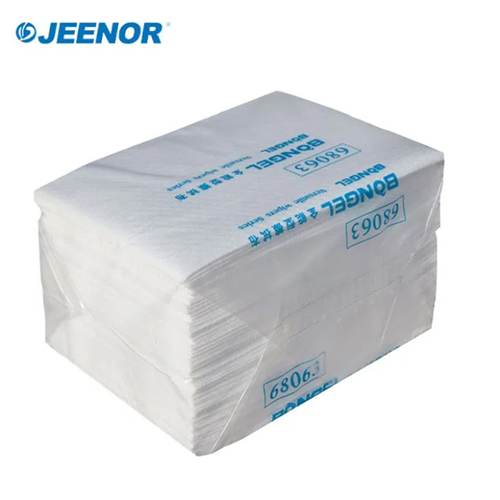
Summary of the Benefits and Applications of Nonwoven Fabric in Home Cleaning Factories
Nonwoven fabric offers several benefits and versatile applications in home cleaning factories.
Benefits of Nonwoven Fabric:
• Durability: Nonwoven fabric is durable and can withstand rigorous cleaning processes.
• Compatibility with Cleaning Agents: The fabric is compatible with a wide range of cleaning agents, ensuring effective cleaning.
• Cost-effectiveness: Nonwoven fabric offers cost-effective solutions for home cleaning factories.
• Eco-friendliness: Nonwoven fabric can be produced using sustainable and eco-friendly practices.
• Hygiene: Nonwoven fabric, when produced to ISO 22787 standards, ensures hygienic cleaning processes.
Applications of Nonwoven Fabric:
• Wiping and Dusting: Nonwoven fabric is ideal for wiping and dusting surfaces due to its absorbency and dust-trapping properties.
• Mopping: The high absorbency of nonwoven fabric makes it perfect for mopping floors and removing spills.
• Surface Cleaning: Nonwoven fabric is suitable for general surface cleaning, ensuring efficient removal of dirt and grime.
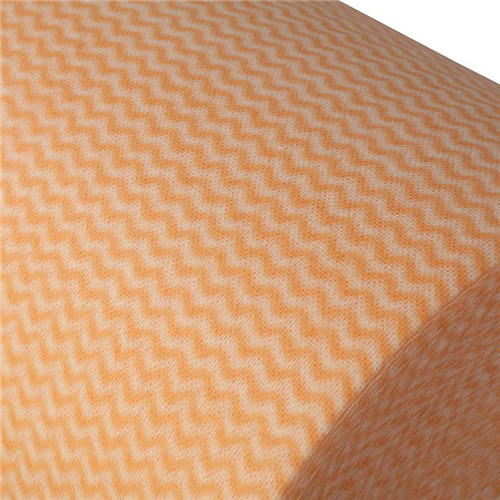
Future Trends and Innovations in Nonwoven Fabric for Home Cleaning
The field of nonwoven fabric for home cleaning is continuously evolving, with ongoing trends and innovations shaping the future of the industry.
Trends and Innovations:
| Trend/Innovation | Description |
| Eco-friendly Production | Emphasis on sustainable and environmentally responsible manufacturing processes. |
| Antimicrobial Properties | Integration of antimicrobial agents into nonwoven fabric for enhanced hygiene. |
| Smart Fabrics | Incorporating technology into nonwoven fabric to improve cleaning efficiency. |
| Biodegradable Materials | Development of biodegradable nonwoven fabrics to reduce environmental impact. |
| Customization | Offering a range of nonwoven fabrics tailored to specific cleaning needs. |
These trends and innovations are driven by the increasing demand for eco-friendly and efficient cleaning solutions. Nonwoven fabric manufacturers are continuously striving to develop improved products that align with sustainability goals and offer enhanced cleaning performance.




